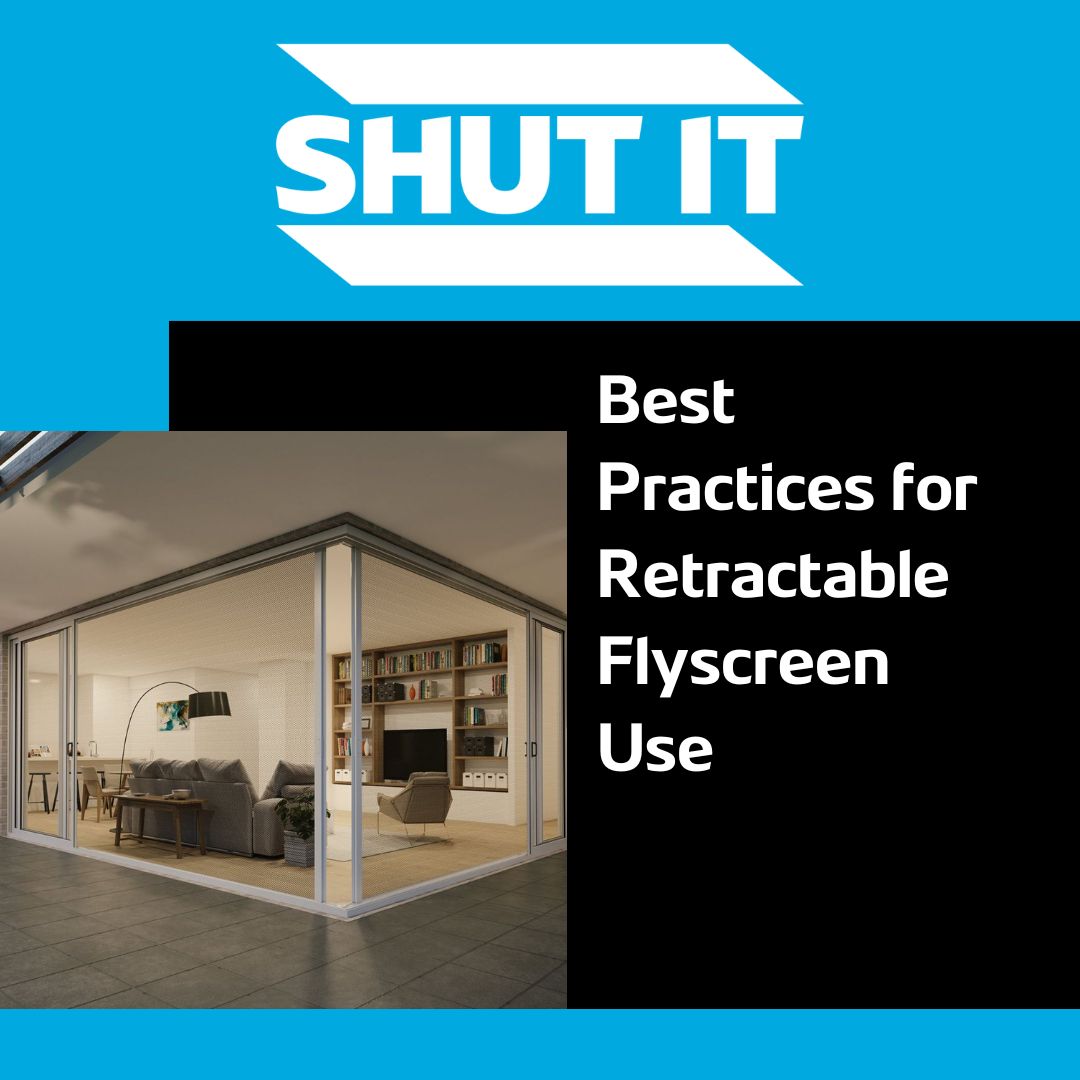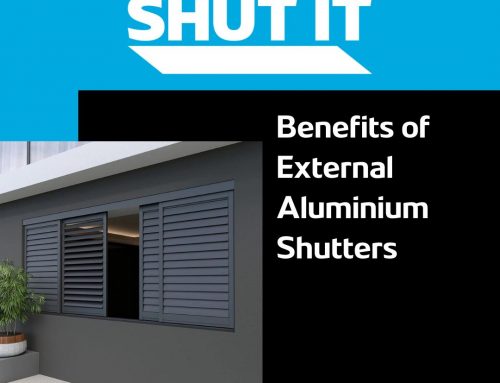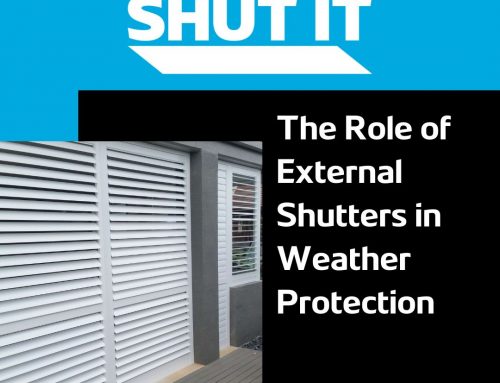In our increasingly interconnected world, the small details can make a big difference in our daily comfort and health. Flyscreens offer a perfect example of this principle in action. Welcome to Shut It Solutions. Understanding the nuances of flyscreen installation and maintenance can significantly improve your living or workspace. This guide provides the essential practices to optimise the use of flyscreens, enhancing their effectiveness and lifespan.
Flyscreens are not just about keeping insects out; they contribute significantly to your home’s air quality and energy efficiency. By following proper installation and maintenance procedures, you can maximise these benefits while also ensuring the longevity of your screens.
Key Takeaways:
- Regular Cleaning: Keep your flyscreens in peak condition by gently washing them at least once every season.
- Proper Installation: Ensure that fly screens are installed snugly to avoid gaps that can let pests in.
- Material Matters: Choose the right materials for durability and improved functionality.
- Routine Checks: Inspect your screens periodically for any tears or damages – prompt repairs can save costs in the long run.
- Professional Help: Consider professional advice for optimal installation and maintenance.
How to Maintain Your Flyscreen for Maximum Durability
To ensure that your flyscreens are always in top-notch condition, a few simple care strategies can be followed. Regularly brush off any dust or cobwebs with a soft brush, and wash the screens using a mild detergent solution. This not only keeps them looking clean but also maintains their integrity against wear and tear.
For tougher stains or built-up grime, a mixture of vinegar and water can be an effective treatment. It’s important, however, to avoid harsh chemicals or scrubbing tools that could damage the mesh.
Installation Tips for Enhanced Effectiveness
Proper installation is crucial for the effectiveness of flyscreens. It is advisable to have your screens fitted by a professional to ensure they are tight and secure. This prevents insects from entering through gaps and also helps to maintain the structure of the frame.
Using higher quality materials such as aluminium or stainless steel can make a significant difference in the durability and efficacy of your flyscreens. These materials are not only stronger but also resistant to corrosion, which is especially beneficial in Australian climates.
For those interested in creating their own bespoke solutions, Better Homes and Gardens Australia offers a detailed guide on making custom-made flyscreens. This DIY approach can be particularly rewarding if you’re looking to integrate unique requirements or personal touches into your home’s flyscreen installations.
The Significance of Choosing the Right Material
The choice of material for your flyscreens plays a pivotal role in their functionality and lifespan. Each material offers unique benefits and potential drawbacks:
- Fiberglass is popular due to its cost-effectiveness and ability to resist corrosion and staining. However, it can sag over time and is less durable against tears.
- Aluminium screens are more durable than fibreglass and offer better visibility. However, they can dent and are more expensive.
- Stainless Steel is the premium choice for flyscreens, offering superb durability and resistance to corrosion. It’s ideal for high-traffic areas, though it comes at a higher cost.
Selecting the right material depends on your specific needs and environmental conditions. Coastal homes, for example, benefit immensely from stainless steel screens that withstand salty air much better than other materials.
Installation: Ensuring a Bug-Free Home
Installation is another critical aspect. A poorly installed flyscreen can lead to gaps that allow insects to enter, negating the purpose of the screen. Here’s a step-by-step guide to ensuring your screens are installed properly:
- Measure Accurately: As stated, measure the inside of the window frame for the best fit. Proper measurement of flyscreen is crucial to ensure there are no gaps.
- Choose the Right Frame: Frames should be robust and able to hold the mesh taut.
- Secure the Mesh: The mesh should be securely fastened to the frame, without any loose edges.
- Check for Gaps: After installation, inspect around the edges of the frame to make sure there are no gaps. Silicone sealant can be used to fill any small spaces.
Maintenance: Keeping Your Screens in Top Shape
The longevity of your flyscreen also depends on regular maintenance. Here’s how you can keep your screens looking and functioning their best:
- Clean Regularly: Remove the screens and gently wash them with soapy water. Use a soft brush to remove stubborn dirt.
- Repair Tears Immediately: Small tears can become bigger problems if not addressed promptly. Patch kits are available for minor repairs, or you might need to replace the mesh if damage is extensive.
- Check the Frame: Ensure the frame is not bent or broken as this can also allow insects to enter.
- Replace When Necessary: If a screen is beyond repair, replacing it is the best option to ensure your home remains protected.
Advanced Tips for Flyscreen Optimisation
Beyond basic installation and maintenance, there are several advanced tips that can help you maximise the efficacy of your flyscreens:
- Upgrade to Magnetic Screens: Magnetic screens are easier to detach and clean, offering great convenience.
- Consider Pollen-Proof Mesh: For allergy sufferers, mesh that can block pollen as well as insects is an excellent choice.
- Use Brush Strips: Installing brush strips along the edges of the screens can help seal gaps and make the closure smoother.
- Opt for Solar Screens: These specialised screens reduce UV rays and heat, making them ideal for areas that get a lot of sun.
Here’s a comprehensive flyscreen buying guide for further reading on material and type selections.
Environmental Considerations and Sustainability
Choosing environmentally friendly materials and maintaining your flyscreens properly can also contribute to sustainability:
- Eco-Friendly Materials: Some newer materials are made from recycled components and are more environmentally friendly.
- Reduce Air Conditioning Costs: By allowing breezes to flow through, well-maintained flyscreens can reduce the need for air conditioning, lowering energy use.
- Longevity Reduces Waste: Durable materials like stainless steel may be more costly initially but reduce the need for replacements, lessening waste over time.
The Impact of Proper Flyscreen Use on Health and Comfort
Properly installed and maintained flyscreens have a significant impact on the health and comfort of home occupants:
- Prevent Disease: By keeping out mosquitoes and other insects, flyscreens contribute to preventing diseases such as malaria and the Zika virus.
- Enhance Air Quality: They allow fresh air to circulate while reducing the amount of dust and allergens that enter.
- Improve Sleep Quality: Cooler, fresher environments created by the use of flyscreens can help improve sleep quality, especially during warmer months.
Adapting Flyscreens for All Seasons
In regions with varying weather conditions, adapting your flyscreens for different seasons can provide year-round benefits:
- Winterise Your Screens: In colder months, replacing the mesh with glass panels can help insulate homes while still allowing light in.
- Adjustable Screens: Some modern flyscreens are designed to be adjustable, allowing more or less air flow depending on the season.
- Regular Seasonal Maintenance: Adjust your maintenance routine seasonally to ensure your screens are always performing at their best.
Conclusion
At Shut It Solutions, we understand the critical role that well-maintained and properly installed flyscreens play in enhancing the comfort and safety of your living spaces. Not only do they protect against pests, but they also contribute to better air quality and energy efficiency in your home. We encourage you to consider these best practices for choosing the right materials, cleaning and maintaining your flyscreens to maximise their benefits.
If you’re ready to upgrade your flyscreens or need expert advice on the best solutions for your home, don’t hesitate to get in touch with us. Our team is dedicated to providing you with top-notch service and support to ensure your environment is comfortable, safe, and pest-free. Let us help you make the most of your investment in flyscreens and enjoy a healthier, more comfortable home.
FAQs
How often should fly screens be replaced?
Flyscreens should be replaced every 5-7 years, depending on their condition and exposure to elements.
Can flyscreens reduce dust and pollen entry?
Yes, using finer mesh can help filter out dust and pollen, improving indoor air quality.
Are there different types of fly screen materials?
Absolutely, options range from fibreglass and aluminium to stainless steel, each offering different benefits.
How do you measure for a flyscreen installation?
Measurements should be taken from the inside of the window frame, ensuring accuracy for a snug fit.
Can I install a flyscreen on any type of window?
Flyscreens can be adapted to most window types, but some may require special fittings or customisation.





